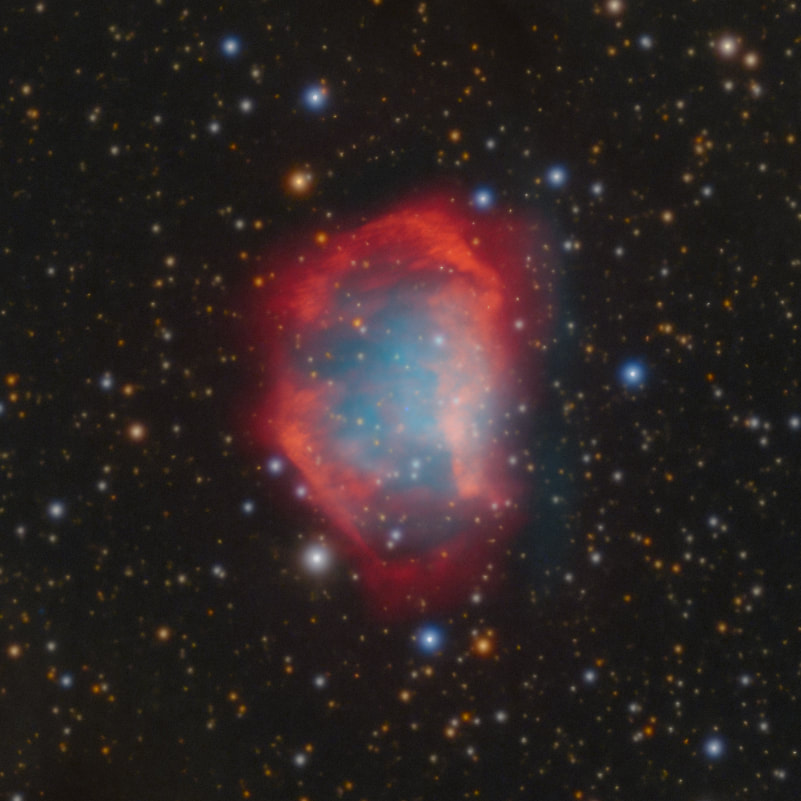johnnydeep wrote: ↑Thu Aug 27, 2020 7:48 pm
Ann wrote: ↑Thu Aug 27, 2020 7:09 pm
johnnydeep wrote: ↑Thu Aug 27, 2020 6:06 pm
Anyone know what this background galaxy is? It's oddly rectangular!
What Galaxy is This.JPG
How about it's the NGC 474 Galaxy Group version of the Large Magellanic Cloud?
Ann
Though it looks similarly rectangular, this one seems more well-defined and disjoint from the others. And it's also much
bluer!
Aha, I found it, and it has a name: PGC 4755 !
From
https://www.irida-observatory.org/CCD/N ... otated.jpg
Well done finding out the designation of the blue rectangular galaxy!

However, I'm not sure that PGC 4755 is bluer than the Large Magellanic Cloud. Remember that we are comparing it with the larger galaxies in this field, non of which, not even the blue-looking ring-spiral galaxy NGC 470, is very blue. The color indexes of NGC 470 is, U-B, +0.100, B-V, +0.750. The lower these values are, the bluer is the galaxy. Galaxy colors are always diluted, but NGC 470 is not very blue.
As for the fact that PGC 4755 looks more well-defined than the LMC, remember that PGC 4755 is extremely blurry in the APOD, while the picture that I posted of LMC is sharply defined, so that we can see all the irregularities. The blurriness of PGC 4755 helps smooth out everything but the main features.
My software Guide quotes the PGC catalogue to claim that while the NGC 474 group is about 100 million light-years distant (which is also what the APOD caption reports), the distance to PGC 4755 is about 240 million light-years. I have no idea if you can trust the latter distance estimate, but I guess it is at least possible that PGC 4755 is a background object.
Let me have a go at guessing what kind of a galaxy that PGC 4755 is:
Take a look at galaxies NGC 4631 and NGC 4656 at left. Both have thick, puffed-up blue disks. NGC 4631 clearly shows off its yellow center (it looks deep orange in the picture I posted), but in NGC 4656 the center is barely yellow.
And take a look at galaxy NGC 3628 at right. This galaxy is not blue at all, but it does have a very rectangular shape.
I think PGC 4755 displays a mixture of those features. I think it has either (and most likely) a thick blue disk full of star formation, or else it might actually have a brilliant blue bar. If the blue feature is a bar, it becomes hard to explain why there is no yellow center. But if the blue feature is a bar, then it becomes much easier to explain the flaring at the edges, because that would simply be the beginnings of a faint ring or faint arms.
The lack of an obvious yellow center is easier to explain if the blue feature is a disk than if it is a bar, but the flaring at the edges becomes problematical. But as you can see in galaxy NGC 3628, flaring at the edges does occur in disk galaxies.
Ann
 Shell Galaxies in Pisces
Shell Galaxies in Pisces









